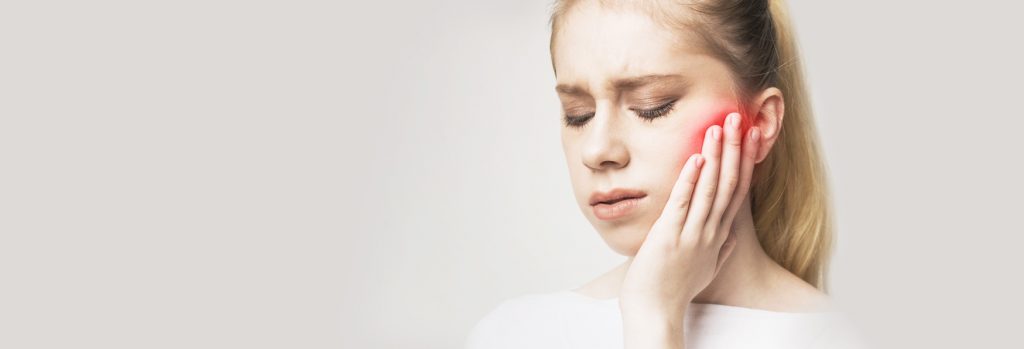Experiencing facial pain, tightness, locking and clicking when opening and closing your mouth, head and neck aches and/or ringing in the ears? You could have a disorder of your temporomandibular joint (TMJD).

JAW PAIN (TMD)
What is the temporomandibular joint?
The temporomandibular joint (TMJ) lies just in front of your ear, where your jaw bone connects to your skull and is the most used joint in your body. It allows us to talk, chew, yawn, swallow and sneeze.
What is Temporomandibular Joint Dysfunction?
Temporomandibular Joint Dysfunction or TMJD is any condition that causes pain and dysfunction in the jaw joint and the muscles that control jaw movement.
It affects approximately 40 per cent of the population, with the greatest incidence in adults aged 20 to 40. Almost every patient with TMJD will have contributing factors arising from the neck, and about one third of people suffering from neck pain and headaches have the TMJ as a contributor to this pain. It can be the missing link in treating headaches.
Signs & symptoms of TMD
Dull, aching pain is the most common symptom associated with TMJ disorders. Pain is usually felt in the jaw, but can also be felt in the face, ear, and teeth and may also radiate to the neck or shoulders. It is often made worse by chewing. Other symptoms include:
- Pain when eating hard ro chewy food
- Jaw clicking or popping
- Jaw locking
- Tightness or pain opening your mouth
- Headaches
- Ringing or fullness in the ears
What causes disorders of the temporomandibular joint?
There are many potential causes of TMJ dysfunction. These include:
- Trauma to the joint via a direct blow
- Chewing gum, biting finger nails, yawning, grinding teeth or jaw clenching
- Missing teeth or poor bite (malocclusion)
- Resting the head in the hand
- TMJ arthritis
- Dislocation of the disc
- Postural abnormalities – this is the big one!
- Stress
How is TMD treated?
After an examination your physiotherapist will be able to provide you with a treatment plan.
Treatment will usually involve:
- Massage of the jaw and neck muscles
- Stretches
- Strengthening exercises
- Advice on how to improve your posture
- Advice on habit and diet modification.
The symptoms of TMD can be managed effectively in the long-term.

